Food handler can effectively remove soil from their hands through proper handwashing techniques. By following the correct steps, such as wetting hands, lathering with soap, scrubbing for 20 seconds, rinsing thoroughly, and drying with a clean towel or air dryer, food handlers can ensure the removal of soil and maintain good hygiene practices.
Table of Contents
ToggleHandwashing is a crucial aspect of food safety, preventing the spread of contaminants and ensuring the safety of consumers. Regular and effective handwashing is essential for food handlers to maintain a clean and sanitary environment in the food industry. As the saying goes, cleanliness is next to godliness, especially in the food industry.
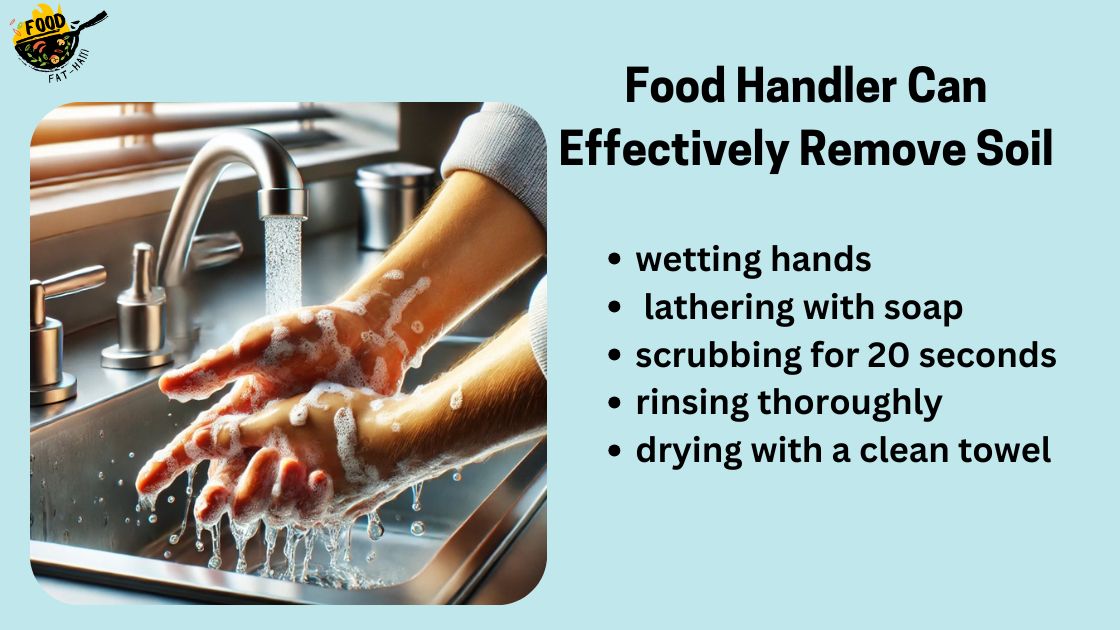
Whether you are a chef, server, or any other food handler, maintaining proper hygiene is of utmost importance. One critical aspect of hygiene is effectively removing soil from your hands, as this can harbor harmful bacteria and other contaminants that can jeopardize food safety. By mastering proper handwashing techniques, food handlers can ensure the removal of soil and maintain a clean and sanitary environment.
We will delve into the importance of handwashing for food handlers and explore the steps involved in achieving effective soil removal to uphold good hygiene practices.
Understanding The Impact Of Soil On Food Safety
Food handlers can effectively remove soil by understanding its impact on food safety. This knowledge allows them to take necessary measures to ensure the cleanliness and quality of the food they handle. By responsibly addressing soil-related issues, food handlers prioritize the well-being of consumers and uphold food safety standards.
Soil is a critical factor in food safety as it plays a significant role in harboring pathogens and contaminants. Understanding the impact of soil on food safety is essential for food handlers to effectively remove soil and reduce the risk of foodborne illnesses.
In this blog post, we will delve into the different types of soil present on food surfaces, the role of soil in harboring pathogens and contaminants, and how ineffective soil removal can lead to foodborne illnesses.
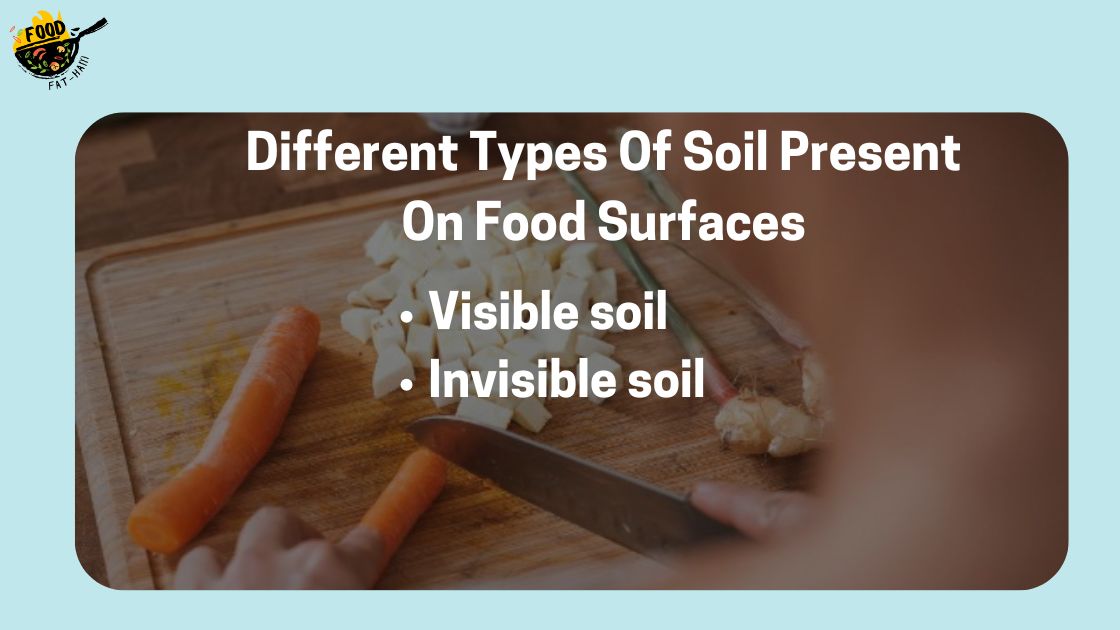
Different Types Of Soil Present On Food Surfaces:
- Visible soil: This refers to the dirt or debris that can be easily seen on food surfaces. It includes particles of sand, clay, and organic matter.
- Invisible soil: Also known as microsoiling, it consists of microscopic particles that are not easily visible to the naked eye. This type of soil can include bacteria, viruses, and other contaminants.
The Role Of Soil In Harboring Pathogens And Contaminants:
- Shelter for pathogens: Soil provides a protective environment for pathogens like bacteria and viruses, allowing them to survive and multiply on food surfaces.
- Adhesion of contaminants: Soil particles can act as a binding agent for contaminants, making it difficult to remove them effectively.
- Protective biofilms: Some microorganisms can form biofilms in the presence of soil, creating a protective layer that shields them from sanitization efforts.
How Ineffective Soil Removal Can Lead To Foodborne Illnesses:
- Cross-contamination: If soil and its associated pathogens are not thoroughly removed from food surfaces, they can contaminate other food items, leading to cross-contamination.
- Inadequate sanitization: Soil can create a barrier, preventing sanitizers or disinfectants from effectively killing pathogens present on food surfaces.
- Growth of pathogens: The presence of soil can create favorable conditions for the growth of pathogens, increasing the risk of foodborne illnesses.
A proper understanding of the different types of soil, their role in harboring pathogens, and the consequences of ineffective soil removal is crucial for food handlers. By implementing proper cleaning and sanitization practices, food handlers can minimize the risk of foodborne illnesses and ensure the safety of the food they handle.
Factors Affecting The Effectiveness Of Soil Removal
Soil removal effectiveness for food handlers depends on multiple factors, including their adherence to proper cleaning techniques, the type and level of soil present, the cleaning agents used, and the duration and intensity of cleaning actions.
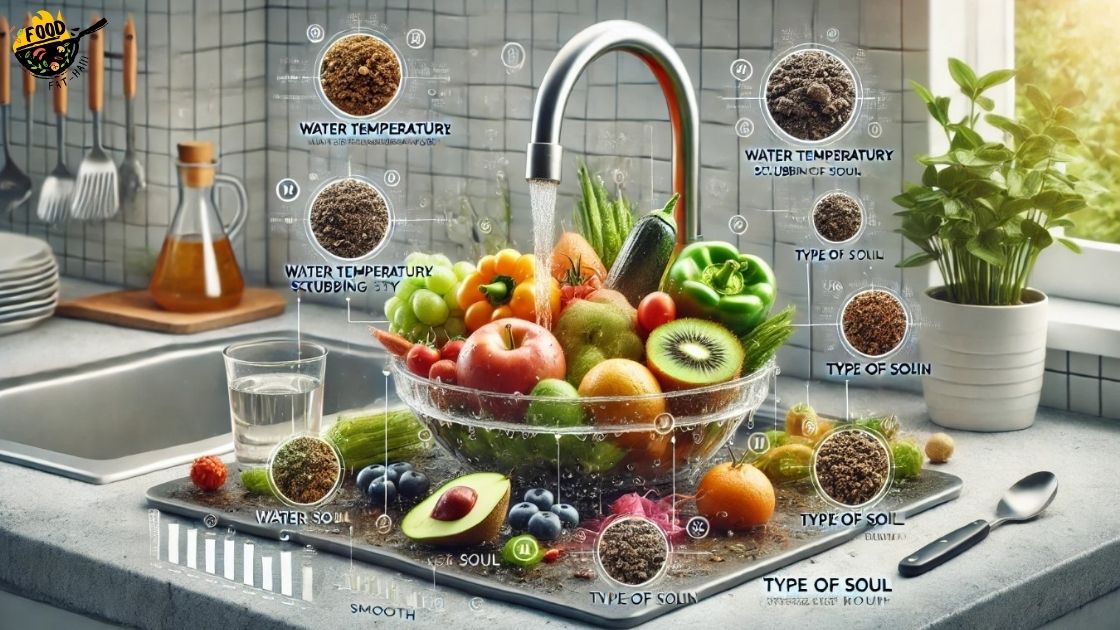
The Impact Of Temperature And Ph On The Removal Of Soil:
Temperature and pH play crucial roles in the effectiveness of soil removal by food handlers.
Optimal temperature enhances the cleaning process, as higher temperatures increase the activity of cleaning agents.
Higher pH levels, also known as alkaline conditions, are generally more effective in removing soil compared to lower pH levels.
The combined impact of temperature and pH ensures efficient soil removal, making it essential for food handlers to consider these factors during cleaning.
The Importance Of Proper Cleaning Procedures And Equipment:
Proper cleaning procedures are essential for effective soil removal and maintaining food hygiene standards.
Food handlers should follow established cleaning protocols that include essential steps such as pre-rinsing, manual or mechanical scrubbing, and post-rinsing.
Utilizing appropriate cleaning equipment, such as brushes or scrubbers, aids in the mechanical removal of soil.
Regular maintenance and cleaning of equipment are crucial to ensure their optimal performance, resulting in efficient soil removal.
The Influence Of Cleaning Agents And Sanitizers On Soil Removal:
- Choosing the right cleaning agents and sanitizers is vital for effective soil removal.
- Alkaline-based cleaning agents, known as detergents, are effective in removing organic soils.
- Acid-based cleaning agents are recommended for mineral deposits and scale removal.
- Sanitizers, which are used after soil removal, kill or inhibit the growth of pathogens on surfaces.
- Proper selection and application of cleaning agents and sanitizers are crucial in achieving maximum soil removal and ensuring food safety.
Temperature, pH, proper cleaning procedures and equipment, as well as the choice of cleaning agents and sanitizers, all significantly impact the effectiveness of soil removal by food handler. Considering these factors and following best practices in cleaning will help maintain food hygiene standards and ensure safe food handling practices.
Techniques For Effective Soil Removal
Effective soil removal techniques are crucial for food handler. By using proper cleaning tools and following sanitation guidelines, food handlers can effectively remove soil and maintain a hygienic environment.
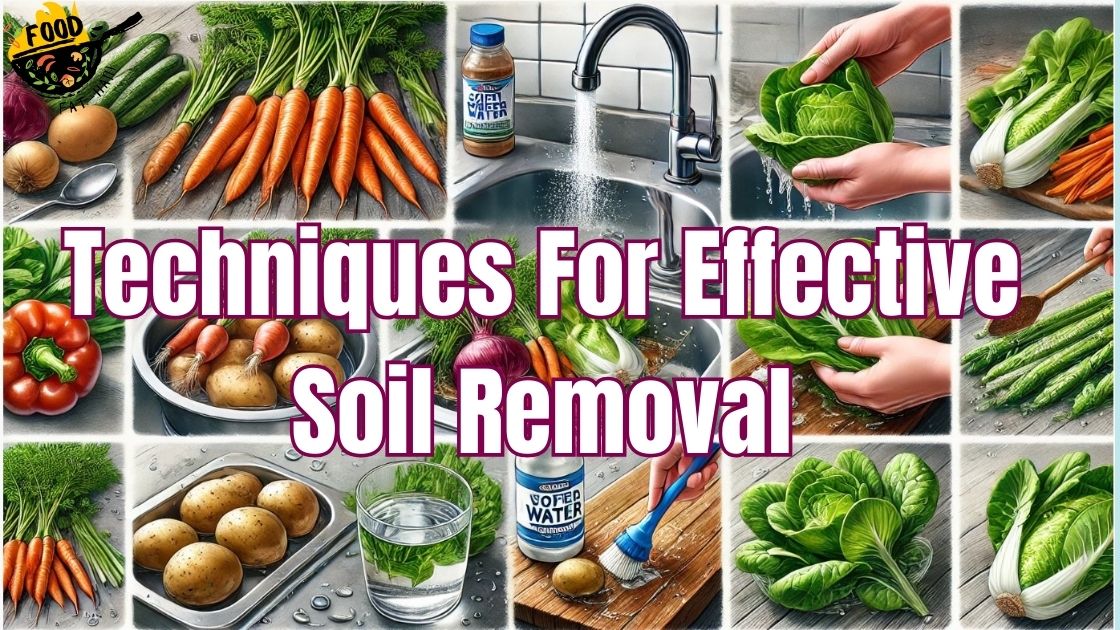
Pre-rinsing and soaking as initial steps for soil removal:
Before starting the actual cleaning process, pre-rinsing the soiled surfaces allows for the preliminary removal of loose debris, making the subsequent steps more effective. Soaking the items or surfaces in warm water with a gentle detergent helps to loosen stubborn dirt, grease, and grime, facilitating the removal process.
The proper use of mechanical scrubbing and brushing techniques:
Mechanically scrubbing the surfaces with a suitable brush or scrub pad enhances the removal of tough, ingrained soil. Applying moderate pressure while scrubbing in a back-and-forth or circular motion helps dislodge and lift the soil effectively.
The effectiveness of high-pressure water and steam cleaning:
High-pressure water cleaning, using specialized equipment, can be highly effective in removing soil from various surfaces. The forceful jet of water dislodges stubborn deposits and flushes them away.
Steam cleaning, utilizing high-temperature steam, is an efficient method for soil removal. The heat softens and loosens the soil, while the steam’s pressure carries away the dirt and residue.
Incorporating these techniques into a comprehensive cleaning routine ensures that food handler can effectively remove soil from their equipment, utensils, and surfaces.
Best Practices For Soil Removal In Various Food Handling Environments
Food handler can effectively remove soil by following best practices in various food handling environments. These practices include proper handwashing, using approved cleaning agents, and adhering to established cleaning and sanitizing procedures. Regular monitoring and training ensure a safe and clean food preparation environment.
Understanding the Specific Soil Types and Challenges in Different Settings:
In restaurant kitchens:
- Grease and oil buildup on grills and fryers can be a common challenge. Regular cleaning using degreasers is essential.
- Food particles and spills on countertops and cutting boards should be promptly wiped away to prevent bacterial growth.
- Floors can accumulate dirt, food debris, and liquid spills. Daily mopping and sweeping are necessary.
In food processing facilities:
- Sticky residues, such as starch or sugar, are often found on processing equipment. Hot water or chemical cleaning agents are effective for their removal.
- The presence of allergens and cross-contamination risks require thorough and separate cleaning protocols for different equipment.
- Conveyor belts and production lines should be regularly checked and cleaned to prevent product contamination.
In-home kitchens:
- Grease splatters and food residues can accumulate on stovetops. Using dish soap and warm water to remove stains is recommended.
- Cutting boards, utensils, and sinks can harbor bacteria. Cleaning with antibacterial solutions after each food preparation session is crucial.
- Refrigerators may develop mold and unpleasant odors if not cleaned regularly. Defrosting and using a mild detergent solution helps eliminate these issues.
Developing Tailored Cleaning Protocols for Different Surfaces and Equipment:
- Identify the surfaces and equipment that require cleaning. Categorize them based on their specific cleaning needs.
- Consider the type of soil, frequency of use, and sanitation requirements when developing cleaning protocols.
- Select appropriate cleaning agents and tools for each surface or equipment. Ensure they are safe for food contact surfaces and effective against the specific soil types present.
- Clearly outline step-by-step cleaning procedures to ensure consistency and efficient soil removal.
- Regularly review and update cleaning protocols based on feedback, new guidelines, or changes in operations.
Implementing Regular Training and Monitoring to Ensure Consistent Soil Removal:
- Provide comprehensive training to food handlers on proper cleaning techniques, safety precautions, and the importance of soil removal.
- Conduct regular refresher sessions to reinforce proper cleaning practices and address any issues or concerns.
- Establish monitoring systems to evaluate the effectiveness of cleaning practices and identify any areas that require improvement.
- Implement regular inspections and audits to ensure compliance with cleaning protocols and identify opportunities for employee support or retraining.
- Encourage open communication between staff and management to address any challenges or suggestions related to soil removal practices.
Remember, effective soil removal is vital for maintaining food safety and preventing the growth of harmful bacteria. By understanding the specific soil types and challenges in different food handling environments, developing tailored cleaning protocols, and implementing regular training and monitoring, food handler can ensure consistent and optimal soil removal.
Testing And Verification Of Soil Removal
Food handler can effectively remove soil through testing and verification techniques. These methods ensure that the soil is completely eliminated, meeting the highest standards of cleanliness. Soil removal is crucial in maintaining food safety and preventing contamination risks.
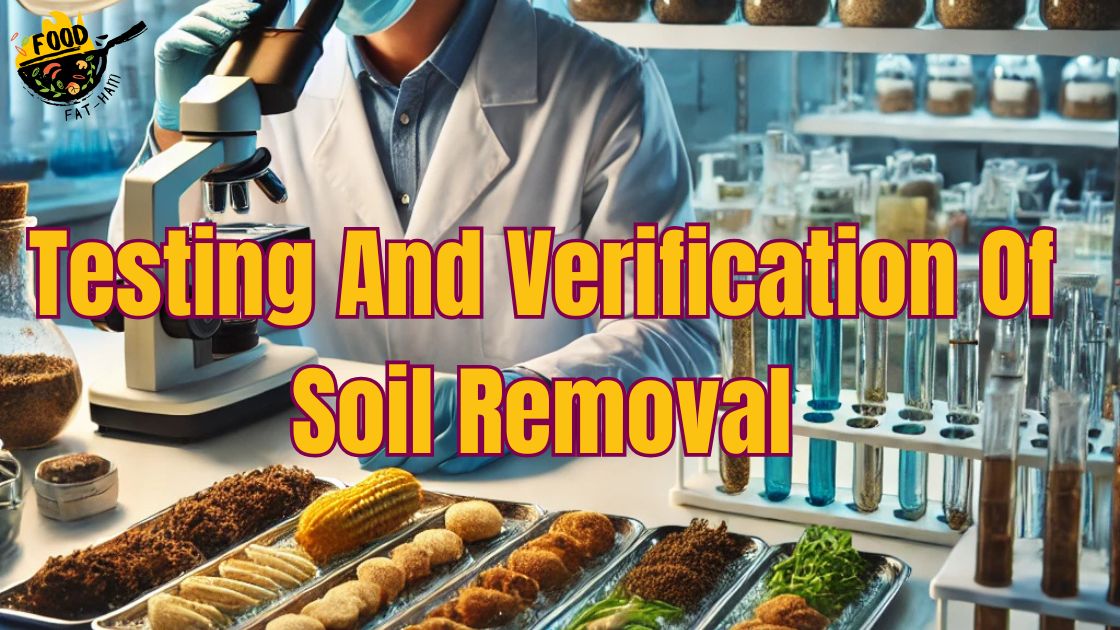
The Importance Of Visual Inspection And ATP Testing For Assessing Soil Removal Effectiveness
Visual inspection is a crucial step in evaluating the effectiveness of soil removal by food handler. It allows for the identification of any visible residues or build-up that may have been missed during the cleaning process.
ATP testing is a reliable method for measuring the level of organic matter, including food particles, on surfaces. This testing provides objective feedback on the cleanliness of an area and ensures that soil removal has been carried out effectively.
Utilizing Microbial Sampling Methods To Verify The Absence Of Pathogens
Microbial sampling is an essential technique for verifying the absence of harmful pathogens on surfaces. It involves collecting samples and analyzing them to detect the presence of any microorganisms that may pose a threat to food safety.
The use of microbial sampling methods, such as swabbing or surface contact plates, provides a scientifically accurate assessment of soil removal effectiveness by identifying any remaining pathogens that could compromise food hygiene.
Recording And Documenting Soil Removal Practices For Compliance Purposes
- Proper documentation of soil removal practices is crucial for compliance with food safety regulations. It ensures that food handlers are following established protocols and helps in quality control and improvement measures.
- Compliance authorities often require detailed records of soil removal practices, including cleaning schedules, cleaning agents used, and verification methods employed. Accurate documentation not only helps in maintaining compliance but also aids in identifying and rectifying any potential gaps in the cleaning process.
Visual inspection and ATP testing are essential tools for assessing the effectiveness of soil removal by food handlers. Microbial sampling provides additional verification of the absence of harmful pathogens. Furthermore, proper recording and documentation of soil removal practices are essential for compliance purposes.
By implementing these practices, food establishments can ensure the highest standards of cleanliness and food safety.
Tips And Tricks For Efficient Soil Removal
Discover effective tips and tricks to efficiently remove soil as a food handler. Learn essential techniques to ensure cleanliness and hygiene in food preparation areas. Master the art of soil removal and maintain a sanitary environment for optimal food safety.
Using Appropriate Cleaning Tools And Equipment For Specific Tasks:
Using the right tools and equipment is essential for effective soil removal in food handling.
Here are some tips to consider:
- Start with basic cleaning tools like brushes, scrubbers, and sponges to manually remove visible soil from surfaces.
- For hard-to-reach areas, utilize tools with long handles or extendable parts to ensure thorough cleaning.
- Employ specialized cleaning tools like degreasers and sanitizers for areas with stubborn soil or high bacterial contamination.
- Make use of equipment like pressure washers or steam cleaners for deep cleaning large surfaces or equipment.
- Remember to regularly replace or repair worn-out cleaning tools to maintain their effectiveness.
Time-Saving Strategies For Efficient Soil Removal Without Compromising Effectiveness:
Time is of the essence when it comes to soil removal in the food industry.
Here are some strategies to save time while ensuring efficient cleaning:
- Develop a systematic cleaning routine that focuses on high-traffic areas and frequently used equipment.
- Prioritize cleaning tasks based on level of contamination or potential risk to food safety.
- Train food handlers in proper cleaning techniques to reduce time spent on ineffective methods.
- Utilize pre-cleaning techniques like scraping or wiping to remove excess soil before using cleaning solutions.
- Consider using ready-to-use cleaning products that eliminate the need for time-consuming dilution or mixing processes.
- Optimize cleaning process by using color-coded cleaning tools to prevent cross-contamination and reduce time spent on tool identification.
Troubleshooting Common Challenges In Soil Removal And How To Overcome Them:
Despite best efforts, food handlers may encounter challenges in effectively removing soil.
Here are some common challenges and tips to overcome them:
- Grease and oil stains: Apply a degreaser directly to the surface and allow it to penetrate before scrubbing.
- Stubborn food residues: Soak the affected area in warm soapy water to loosen the residue before scrubbing.
- Hard water buildup: Use vinegar or citric acid-based cleaners to dissolve mineral deposits caused by hard water.
- Mold and mildew growth: Apply a mildew remover and scrub the area thoroughly to eliminate mold and mildew.
- Rust stains: Utilize a rust remover or a mixture of lemon juice and salt to remove rust stains from surfaces.
- Lingering odors: Use odor-neutralizing cleaners or natural remedies like baking soda to eliminate unpleasant odors.
Remember, using appropriate cleaning tools, implementing time-saving strategies, and troubleshooting common challenges are essential for efficient soil removal in food handling. By following these tips and tricks, food handlers can ensure a clean and safe environment for food preparation and handling.
The Future Of Soil Removal In Food Handling
Food handlers can effectively remove soil by implementing advanced soil removal techniques that prioritize hygiene and efficiency. These techniques, such as mechanical scrubbing, ultrasonic cleaning, and enzyme-based cleaning solutions, ensure thorough soil removal, maintaining high standards in food handling and safety.

Emerging technologies and innovations in soil removal techniques:
- Development of ultrasonic cleaning technology: This innovative technology utilizes high-frequency sound waves to agitate the cleaning solution, effectively removing soil from food handling surfaces. By creating microscopic bubbles that implode, ultrasonic cleaning offers a thorough and efficient cleaning method.
- Integration of robotics: With advancements in robotics, automated food handling systems equipped with specialized cleaning mechanisms can accurately and precisely remove soil. These robots can navigate complex spaces and effectively target areas that are challenging for human handlers to reach.
- Application of nanotechnology: Nanoparticles, engineered at the molecular level, have shown promising results in soil removal. These minute particles can penetrate the crevices and pores of food handling surfaces, providing enhanced cleaning efficiency.
Potential advancements in cleaning agents and equipment:
- Introduction of eco-friendly cleaning agents: With growing environmental concerns, the future of food handling will see a shift towards sustainable practices. Cleaning agents that are environmentally friendly while maintaining high efficacy in soil removal will become prevalent in the industry.
- Implementation of advanced sensor technology: Smart cleaning equipment equipped with sensors can detect levels of soil and adjust cleaning mechanisms accordingly. This ensures optimal cleaning performance and reduces waste by targeting only areas that require cleaning.
- Incorporation of self-cleaning surfaces: The development of surfaces that possess self-cleaning properties can significantly minimize the accumulation of soil. Such surfaces, designed to repel dirt and debris, will streamline the cleaning process and enhance overall food safety.
Continuous improvement and adaptation to evolving food safety standards:
- Enhancing training programs for food handlers: Continuous education and training programs will be instrumental in equipping food handlers with the knowledge and skills necessary for effective soil removal. Regular updates on best practices and emerging techniques will enable food handlers to stay ahead in maintaining high food safety standards.
- Adoption of advanced monitoring systems: In the future, advanced monitoring systems will track and assess the effectiveness of soil removal processes. Real-time monitoring will enable prompt identification and rectification of any shortcomings, ensuring continuous improvement in food handling practices.
- Collaboration between experts: Increased collaboration between food safety experts, researchers, and industry professionals will drive innovation and the implementation of cutting-edge practices. This collaborative effort will foster a dynamic and synergistic approach to soil removal in food handling.
The future of soil removal in food handling holds tremendous potential. Emerging technologies, advancements in cleaning agents and equipment, and continuous improvement are paving the way for more efficient and effective soil removal practices. With a focus on innovation, sustainability, and adherence to evolving food safety standards, the industry is poised to ensure utmost cleanliness and enhance overall food safety.
Frequently Asked Questions Of When A Food Handler Can Effectively Remove Soil
When A Food Handler Can Effectively Remove Soil From Equipment Is Called?
Food handlers can effectively remove soil from equipment during the cleaning process.
What Precaution Should A Food Handler Take When Cleaning Up Vomit Servsafe?
Clean up vomit with caution by following these guidelines: 1. Wear gloves and protective gear. 2. Use disposable towels to remove as much vomit as possible. 3. Clean the area with a disinfectant approved for vomit cleanup. 4. Dispose of contaminated materials properly to prevent cross-contamination.
When A Food Handler Working In A Nursing Home Reports To Work With A Sore Throat?
A food handler with a sore throat should not report to work in a nursing home.
Where Must A Food Handler Clean Mops?
Mops must be cleaned in a designated area for food handlers.
Conclusion
Food handlers play a crucial role in removing soil effectively and ensuring food safety. By implementing proper hygiene practices, such as regular handwashing and using gloves, they can prevent the transfer of soil and harmful bacteria to food. Additionally, understanding the importance of cleaning and sanitizing surfaces can further minimize the risk of contamination.
It is essential for food handlers to receive comprehensive training on food safety protocols, including the proper techniques for soil removal. By staying updated on regulatory guidelines and best practices, food handlers can contribute to a safe and healthy environment for consumers.
Remember, the removal of soil is not just about aesthetics; it is about maintaining food quality and protecting public health. Together, we can ensure that food remains clean, safe, and enjoyable for everyone.



